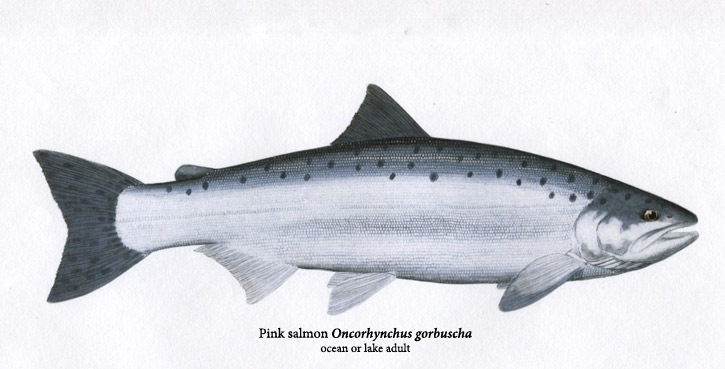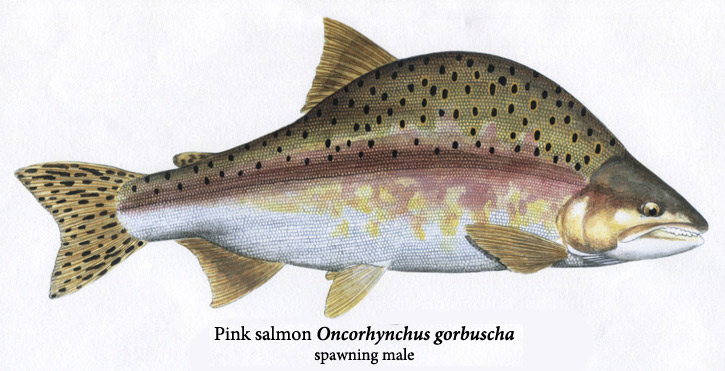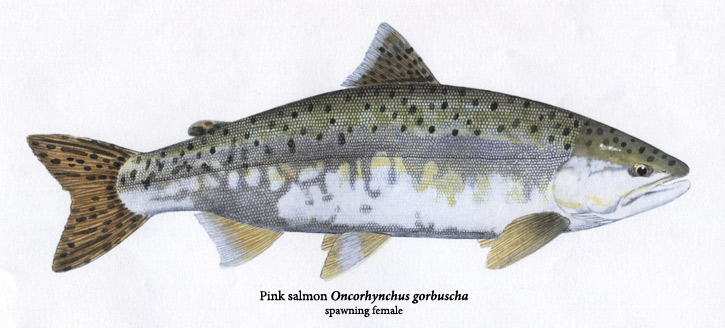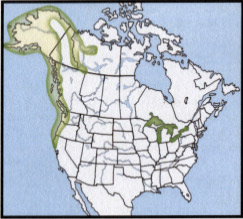Pink Salmon, November 2011, Fish of the Month!


 Pink Salmon
Pink Salmon
Oncorhynchus gorbuscha
Local Names:
Pink, Slimy, Humpy, Humpback, Hump-Back salmon, Haddo, Holia
Average Size:
The smallest of the Pacific salmons;
15 to 24 inches
1 ½ to 5 pounds
Distinguishing Field Marks:
Color and color pattern are reliable distinguishing field marks for this species. (See the illustration.)
-
In all phases of life, Pink salmon have prominent large dark spots on their tail fins, backs, and upper parts of the head. These spots are typically about the size of the pupil of the fish's eye.
-
The tail fin is deeply forked.
-
Spawning males develop prominent humps on their shoulders and backs, as well as a distinct elongation of their upper and lower jaws known as a kype. This is typical of all trout and salmon.

North American Range:
Map to the right shows approximate range in North America.
Diet:
New-born Pink salmon descend their natal streams very soon after hatching. The consume very little if any food until the reach the river's estuary. Their sea or lake diet begins with small invertebrates followed by mainly fish.
Fly Fishing for Pink Salmon:
The first order of business for anyone targeting this species is to gather information about the rivers it runs. Typically, different rivers that support Pink salmon runs see those runs only once every two years. Because of their diminutive size, probably very few of you reading this will travel far to fish for them. This fish has, however, saved plenty of salmon trips on which the larger species, for some reason, don't appear on schedule.
In salt water most Pink salmon are caught on trolled flies or spoons. Once they have entered their spawning streams, they respond to bright streamer or wet flies on deep sinking lines. Because they share habitats with Steelhead, Chinook, and Coho salmon and because those fish will take a fly intended for Pinks, the angler is advised to fish no lighter than a powerful 7 weight or a standard 8 weight outfit.
Unlike the larger more sought-after Pacific salmonids, Pink salmon are still very abundant; abundant enough, in fact, to still comfortably support a commercial fishery.
Some years ago, Great Lakes fishery managers began stocking Pink salmon into the Great Lakes. These runs were sustained mainly by annual stockings. Those stocking programs are no longer in operation, so there are many fewer Pink salmon in any of those waters than there were say 20 years ago. Nevertheless, a few Pinks have colonized some Great Lakes tributaries and contribute a few adults to the fishery.






